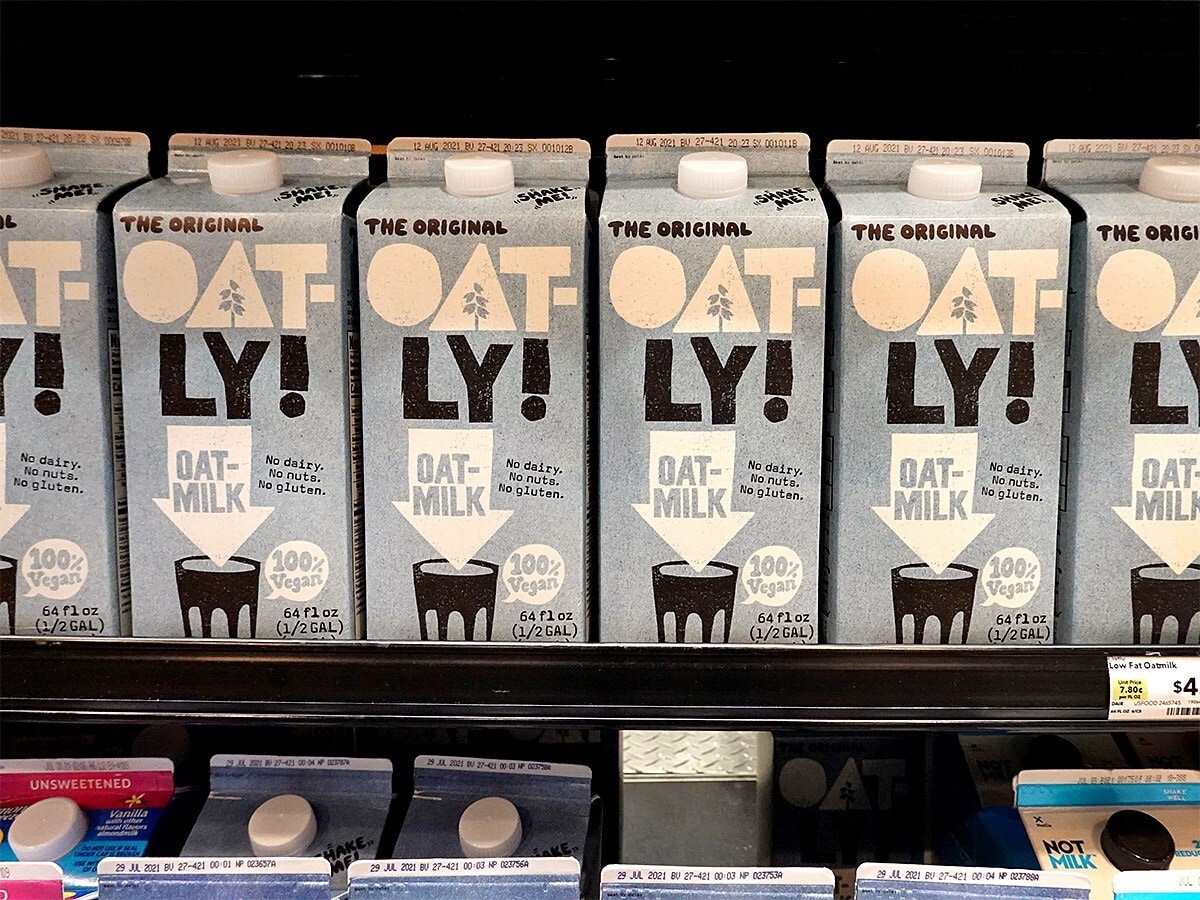The Oatly share price has been hit by concerns over production output, but expansion in southeast Asia could boost earnings when it reports fourth-quarter figures this week.
Oatly [OTLY] is expected to report a 43% sequential drop in earnings but a 4% rise in revenues when it reports its fourth-quarter results on 9 March due to rising costs.
According to analysts polled by CNN, Oatly is expected to post an earnings loss of $0.10 per share, compared with a $0.07 loss in the third quarter. Revenues are forecast to come in at $178m, up from $171.1m in the September quarter. Comparable year-on-year figures were not available because the company listed in May 2021.
The main drag on profitability is due to inflationary pressures on raw materials and supply chain issues. Forecasts are futher depressed because it is unclear whether production at the Utah facility has been restored. Mechanical and automation issues at the unit in late August hurt Q3 revenues.
Despite these setbacks, Oatly stands to benefit from the rising popularity of plant-based diets. The company plans to ramp up its production capacity to cater to the growing number of customers around the world, with particular focus on China and southeast Asia.
Oatly stock struggles
The Oatly share price has suffered given concerns over supply and production as well as the general market move away from growth to value amid higher inflation and interest rates.
The Oatly share price has fallen 23.1% since the start of the year to close at $6.18 on 4 March. This is a decline of 69.4% from May 2021, when the company launched its IPO.
In comparison its rival Danone [BN.PA], which owns Alpro, has seen its share price fall 9.9% since the start of 2022.
Capacity problems plaguing Oatly stock
The current state of production is not known at Oatly’s Utah site, though management statements said that the problem in August was only temporary.
Analysts say, it is unclear whether the issue impacted the company’s plans to add 75 million litres of finished goods and equivalent oat base capacity at the facility in the second half of 2021. The expansion could have increased total production capacity from roughly 150 million litres per year to an estimated 225 million litres.
Oatly’s global capacity expansion continues. It opened a facility in Singapore in July and in China at Ma’anshan in November. The site in China has the potential to produce an estimated 150 million litres a year at full capacity. Oatly now has six production facilities around the world.
“The Chinese market is an important part of Oatly’s global expansion, and the Chinese people play a big part in shifting towards a more sustainable and mainstream plant-based consumption. We are confident in the continued growth of the Chinese market,” Oatly’s CEO, Toni Petersson, said.
Production boost in Q3
In the third quarter Oatly posted revenues of $171.06m and a loss per share of $0.07. This compared with analysts’ expectations of a loss of $0.09 cents and revenues of $185.89m.
Oatly said its revenue increase had been helped by additional supply coming from its new production facility in the Netherlands. However, this was offset by lower than expected production from Utah, which led to a $3m revenue blow. Food service location closures in Asia due to the delta variant of Covid-19 also led to a $3m hit, and the truck driver shortage in the UK is estimated to have lost the company $1m.
Produced finished goods volume for Q3 amounted to 131 million litres, a 77% increase from 74 million litres in the year-ago quarter.
131Million litres
Volume of finished goods Oatly produced in Q3, up 77% on the year-ago quarter
“In EMEA, we are starting to build supply to meet consumer demand, but the pace at which we expected to increase revenue and to open new markets is slower than we anticipated as we navigate Covid,” Petersson said.
He added that as it scales its global operations, it may experience “certain variability in our strong growth rates quarter-to-quarter”, yet it is confident in the “category opportunity and long-term trends and trajectory of our business have never been stronger”.
Analysts are optimistic
Analysts will want to hear any updates on the Oatly production facility at Utah and whether it is back functioning at 100% capacity. They will also ask questions around any further Covid-19 disruption, supply shortages and the impact of rising inflation on demand and pricing.
Piper Sandler analyst Michael Lavery believes the Oatly stock has “significant upside” potential in 2022 if its management can “underpromise and overdeliver”.
HSBC analyst Jeremy Fialko believes, according to The Fly, that its supply chain and production issues are now priced in but believes this year “it should become clear whether Oatly’s expansion into mainland China has come too early and whether the US can continue delivering for the brand”. However, he recently upgraded the stock to ‘hold’ with a target price of $7.40.
According to MarketScreener, analysts generally are more bullish, with a consensus ‘outperform’ rating and a $13.49 target price.
Disclaimer Past performance is not a reliable indicator of future results.
CMC Markets is an execution-only service provider. The material (whether or not it states any opinions) is for general information purposes only, and does not take into account your personal circumstances or objectives. Nothing in this material is (or should be considered to be) financial, investment or other advice on which reliance should be placed. No opinion given in the material constitutes a recommendation by CMC Markets or the author that any particular investment, security, transaction or investment strategy is suitable for any specific person.
The material has not been prepared in accordance with legal requirements designed to promote the independence of investment research. Although we are not specifically prevented from dealing before providing this material, we do not seek to take advantage of the material prior to its dissemination.
CMC Markets does not endorse or offer opinion on the trading strategies used by the author. Their trading strategies do not guarantee any return and CMC Markets shall not be held responsible for any loss that you may incur, either directly or indirectly, arising from any investment based on any information contained herein.
*Tax treatment depends on individual circumstances and can change or may differ in a jurisdiction other than the UK.
Continue reading for FREE
- Includes free newsletter updates, unsubscribe anytime. Privacy policy





